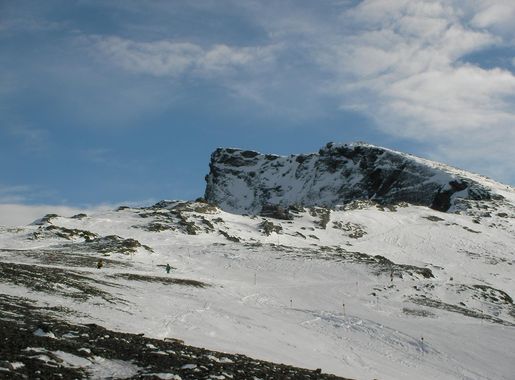
Sierra Nevada: Spain's Majestic Mountain Escape
Discover Sierra Nevada in Spain: A year-round paradise for adventure, nature, and culture lovers, featuring towering peaks, lush landscapes, and charming villages.
Nestled in the heart of Andalusia, Sierra Nevada is a stunning mountain range that offers a unique blend of natural beauty and cultural richness. This destination is perfect for those who crave adventure, tranquility, and a touch of history. As the highest peaks on the Iberian Peninsula, these mountains offer breathtaking views and a diverse range of activities year-round. From skiing and snowboarding in the winter to hiking and mountain biking in the summer, there's something for every outdoor enthusiast. The Sierra Nevada National Park is a treasure trove of flora and fauna. With over 2,000 plant species, many of which are endemic, the park is a paradise for nature lovers. Wildlife enthusiasts can spot mountain goats, wild boar, and a variety of bird species. The park also boasts numerous trails that cater to all levels of hikers, from easy walks to challenging treks that lead to the highest peaks. Beyond its natural allure, Sierra Nevada is steeped in history and culture. The Alpujarras region, located on the southern slopes of the mountain range, is dotted with picturesque whitewashed villages. These villages offer a glimpse into traditional Andalusian life, with their narrow streets, local crafts, and delicious cuisine. Don't miss the chance to visit Trevélez, one of Spain's highest villages, famous for its exquisite cured ham. Whether you're seeking adventure, relaxation, or cultural enrichment, Sierra Nevada is sure to captivate your heart.
Local tips in Sierra Nevada
- Visit during the shoulder seasons (spring and autumn) for mild weather and fewer crowds.
- Rent a car to explore the remote villages and scenic routes at your own pace.
- Bring layers of clothing, as temperatures can vary greatly, especially in higher altitudes.
- Try the local cuisine, particularly the cured ham from Trevélez and the regional tapas.
- Check the weather forecast before planning outdoor activities, as conditions can change rapidly.
Sierra Nevada: Spain's Majestic Mountain Escape
Nestled in the heart of Andalusia, Sierra Nevada is a stunning mountain range that offers a unique blend of natural beauty and cultural richness. This destination is perfect for those who crave adventure, tranquility, and a touch of history. As the highest peaks on the Iberian Peninsula, these mountains offer breathtaking views and a diverse range of activities year-round. From skiing and snowboarding in the winter to hiking and mountain biking in the summer, there's something for every outdoor enthusiast. The Sierra Nevada National Park is a treasure trove of flora and fauna. With over 2,000 plant species, many of which are endemic, the park is a paradise for nature lovers. Wildlife enthusiasts can spot mountain goats, wild boar, and a variety of bird species. The park also boasts numerous trails that cater to all levels of hikers, from easy walks to challenging treks that lead to the highest peaks. Beyond its natural allure, Sierra Nevada is steeped in history and culture. The Alpujarras region, located on the southern slopes of the mountain range, is dotted with picturesque whitewashed villages. These villages offer a glimpse into traditional Andalusian life, with their narrow streets, local crafts, and delicious cuisine. Don't miss the chance to visit Trevélez, one of Spain's highest villages, famous for its exquisite cured ham. Whether you're seeking adventure, relaxation, or cultural enrichment, Sierra Nevada is sure to captivate your heart.
When is the best time to go to Sierra Nevada?
Unmissable attractions to see
Alhambra
Experience the Alhambra: A mesmerizing blend of art, architecture, and history in the heart of Granada's enchanting landscape.
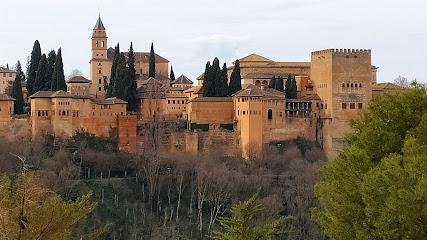
Jardines del Triunfo
Explore the lush beauty and historical significance of Jardines del Triunfo, a serene park in the heart of Granada, perfect for relaxation and scenic views.
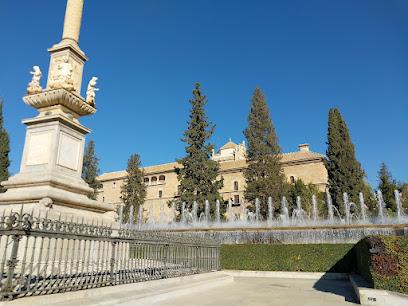
Generalife
Discover the serene beauty of Generalife, a historic summer palace and gardens showcasing the splendor of Moorish architecture and lush landscapes.

Parque de las Ciencias
Discover the fascinating world of science at Parque de las Ciencias, a vibrant museum and planetarium in Granada offering interactive experiences for all ages.
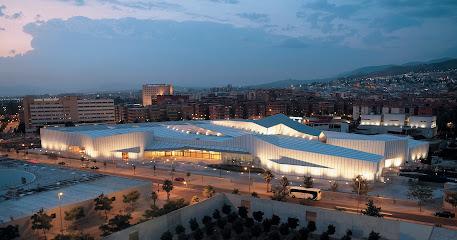
Activities Park Mirlo Blanco
Experience family fun and thrilling adventures at Activities Park Mirlo Blanco in Sierra Nevada, Granada - a perfect getaway for all ages.
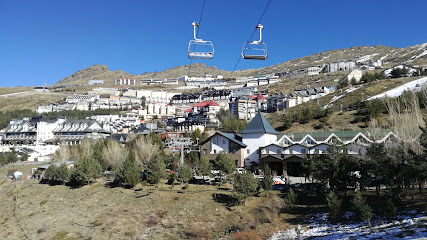
Hospital Real, Granada
Discover the historic Hospital Real in Granada, where centuries of history meet modern academia in a stunning architectural masterpiece.

Castell de Calahorra
Discover the stunning Castell de Calahorra, a historical castle in Granada offering breathtaking views and a rich cultural experience for all visitors.
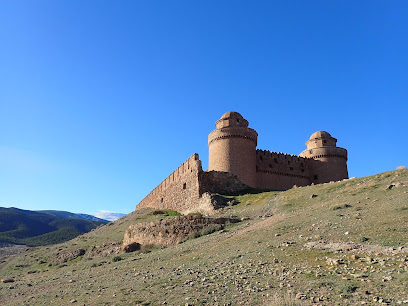
Hoya de Pedraza Botanical Garden
Explore Hoya de Pedraza Botanical Garden in Granada, a serene oasis of diverse flora and stunning landscapes perfect for nature lovers and tourists.
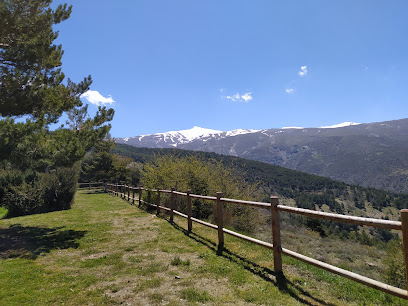
Dehesa Del Camarate
Explore the enchanting landscapes of Dehesa Del Camarate, a national forest in Granada, where nature's beauty awaits every traveler.
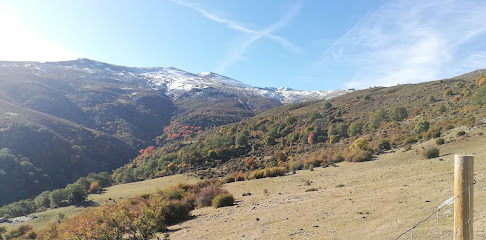
Cueva Zincalé
Immerse yourself in the authentic flamenco experience at Cueva Zincalé, a historical landmark in Granada's Albaicín district, where culture and passion collide.
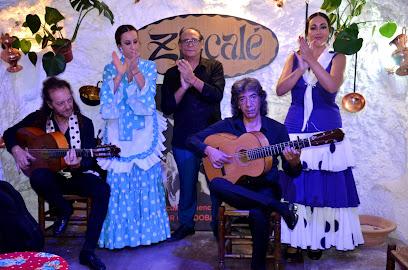
Ges Spa Baños Árabes Palacio de Comares
Discover serenity at Ges Spa Baños Árabes Palacio de Comares in Granada, where ancient traditions meet modern wellness for the ultimate relaxation experience.
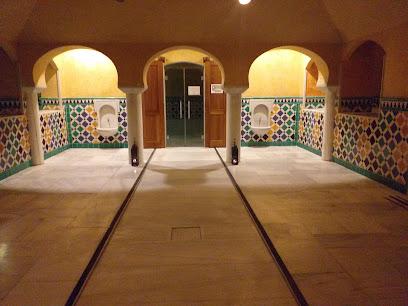
Teatro Flamenco Granada
Immerse yourself in the vibrant world of flamenco at Teatro Flamenco Granada, where passion and tradition come alive through music and dance.
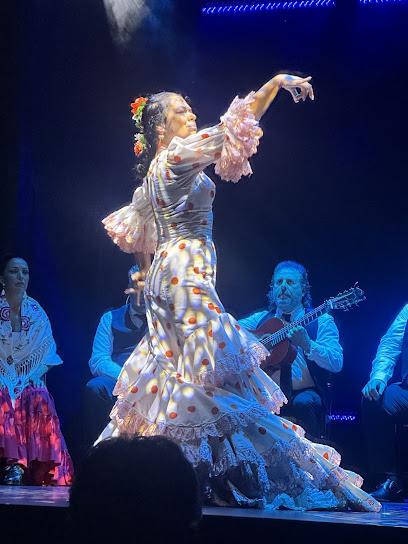
Puente Colgante de los Cahorros
Discover the stunning Puente Colgante de los Cahorros, a breathtaking hanging bridge in Granada, surrounded by nature's beauty and adventure.

Patio de los Arrayanes
Explore the tranquil beauty of Patio de los Arrayanes, a breathtaking courtyard within the iconic Alhambra complex in Granada, Spain.
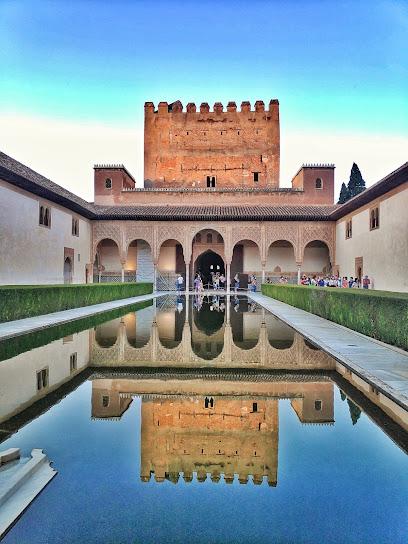
Botanical Garden la Cortijuela
Explore the enchanting Botanical Garden la Cortijuela in Granada, where vibrant flora and tranquil landscapes create a serene escape for all nature lovers.
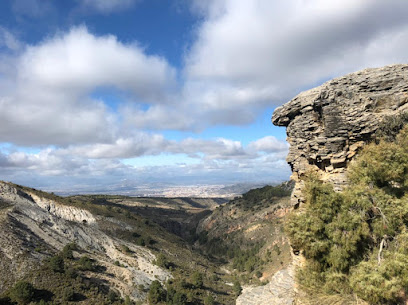
Essential places to dine
Mesón Joaquín
Experience authentic Spanish cuisine at Mesón Joaquín in Trevélez, where local flavors meet breathtaking mountain views.
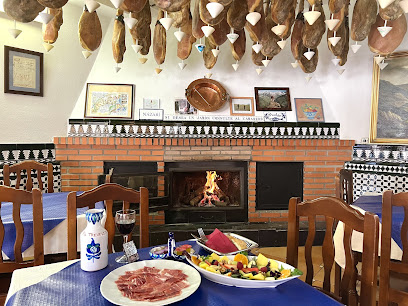
Restaurante Piedra Ventana
Experience authentic Mediterranean flavors at Restaurante Piedra Ventana in Trevélez – where tradition meets taste amidst stunning mountain views.
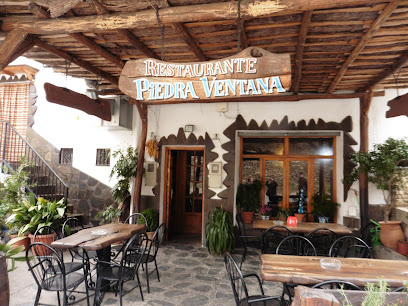
Restaurante La Fabriquilla
Experience exquisite Mediterranean cuisine amidst stunning mountain views at Restaurante La Fabriquilla in Güéjar Sierra.
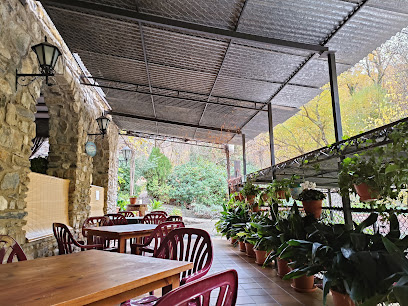
Meson Haraicel
Discover authentic mutton barbecue at Meson Haraicel in Trevélez – where tradition meets taste amidst stunning mountain views.

Restaurante Tito Luigi
Experience the flavors of Italy in the heart of Sierra Nevada at Restaurante Tito Luigi – where every dish tells a story.
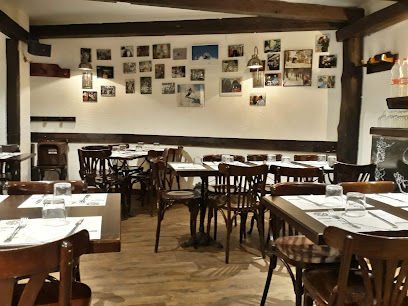
Restaurante La Muralla
Discover Restaurante La Muralla in Sierra Nevada: where stunning views meet exquisite flavors in a memorable dining experience.

Restaurante La Antorcha
Discover exquisite Mediterranean cuisine amidst stunning alpine views at Restaurante La Antorcha in Sierra Nevada.
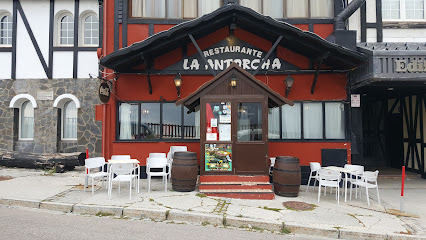
La Visera
Discover authentic Spanish cuisine at La Visera in Sierra Nevada - a cozy restaurant offering delicious dishes at great prices.
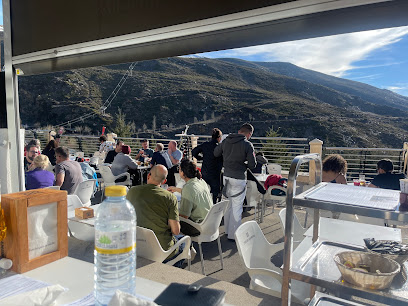
Tito Tapas
Experience authentic Spanish flavors at Tito Tapas in Sierra Nevada - where every bite tells a story.
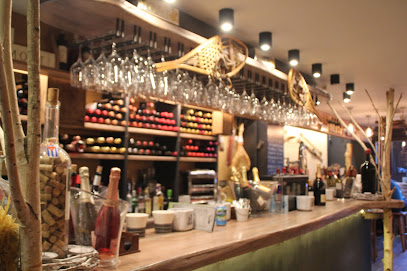
Terraza Tia María
Discover delightful Mediterranean flavors at Terraza Tia María in Sierra Nevada, where stunning views meet exceptional cuisine.

Restaurante Ci Vediamo
Discover authentic Italian flavors at Restaurante Ci Vediamo in Monachil - where delightful dishes meet stunning mountain views.
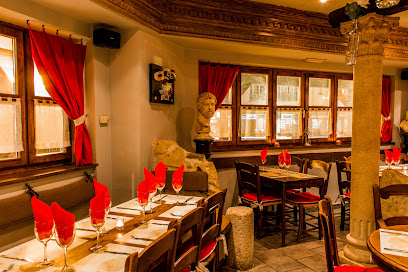
Restaurante Little Morgan
Experience authentic Mediterranean cuisine at Restaurante Little Morgan in Sierra Nevada - perfect for families seeking delicious meals amidst stunning mountain views.
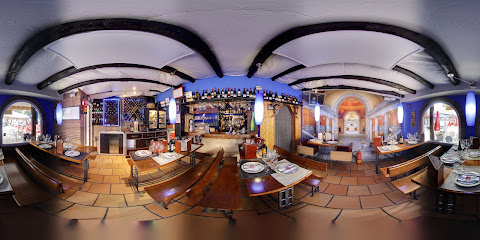
Bar Restaurante Las Gondolas
Experience authentic grill cuisine at Bar Restaurante Las Gondolas while enjoying stunning mountain views in beautiful Pradollano.
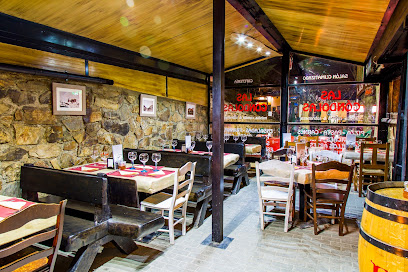
Restaurante La Mar Salá
Experience authentic Andalusian cuisine amidst breathtaking mountain scenery at Restaurante La Mar Salá in Sierra Nevada.
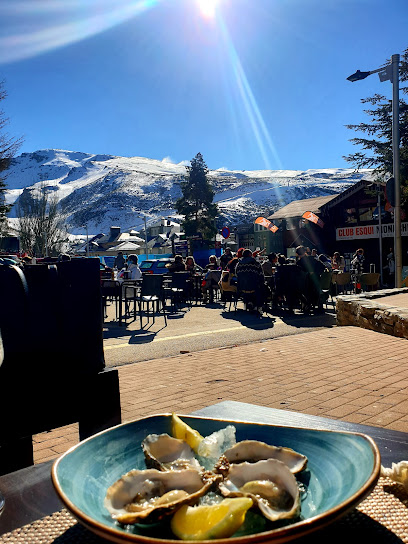
Restaurante Los Jamones Sierra Nevada
Discover delectable grilled meats and artisan pizzas in the heart of Sierra Nevada's breathtaking scenery at Restaurante Los Jamones.

Markets, malls and hidden boutiques
Nevada Shopping
Experience the ultimate shopping destination in Armilla, Granada, with diverse stores, delightful dining, and vibrant entertainment at Nevada Shopping.

Sierra Nevada
Experience the thrill of skiing and the beauty of nature at Sierra Nevada, Spain's premier ski resort nestled in the stunning Andalusian mountains.
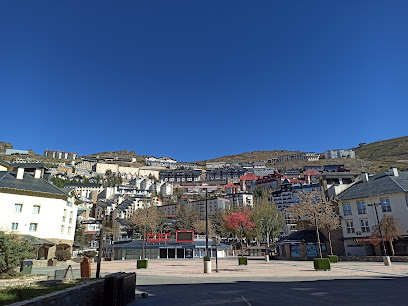
Alcaicería
Explore Alcaicería, Granada's historic market filled with unique handicrafts, religious goods, and delightful toys in a vibrant cultural atmosphere.
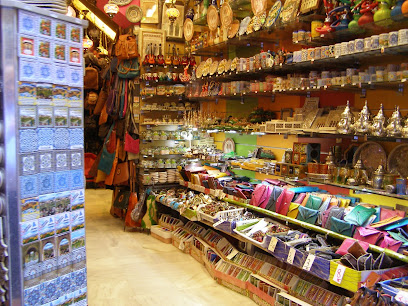
GO SHOPPING Sierra Nevada
Discover unbeatable deals and a variety of products at GO SHOPPING Sierra Nevada, the ultimate dollar store experience for savvy tourists.
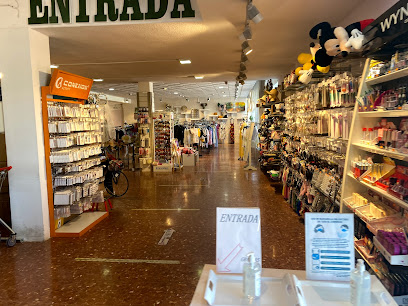
Snowmotion
Discover the ultimate ski experience at Snowmotion in Sierra Nevada, offering expert lessons, top-notch rentals, and a vibrant ski community.
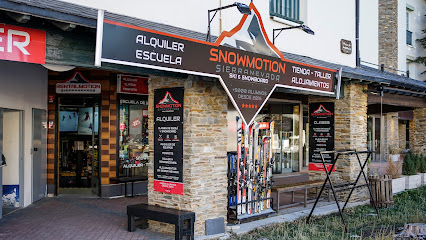
CEROGRADOS • Sierra Nevada
Explore the snowy peaks of Sierra Nevada with CEROGRADOS, your ultimate destination for skiing lessons and premium ski equipment.
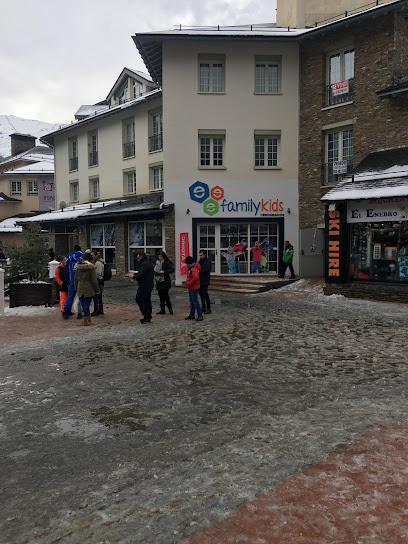
Surfin Sierra Nevada
Explore the Sierra Nevada mountains with Surfin Sierra Nevada, your premier outdoor sports destination for skiing, snowboarding, and adventure.
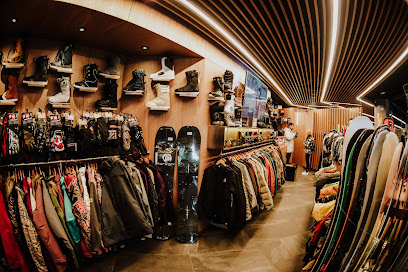
Mulhacén Ski Sierra Nevada
Discover the exhilarating slopes of Mulhacén Ski Sierra Nevada, where winter sports meet breathtaking scenery in the heart of the Sierra Nevada mountains.
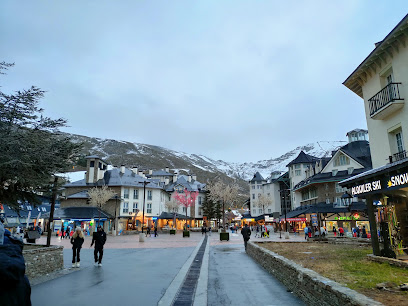
SKI3
Discover the ultimate winter adventure at SKI3, your all-in-one ski shop, school, and travel agency in the heart of Sierra Nevada.
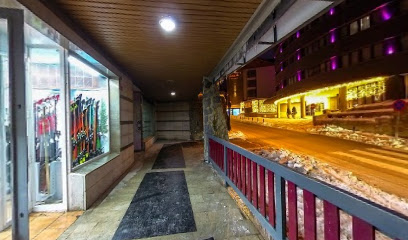
Besnow
Explore Besnow in Sierra Nevada for top-quality ski and snowboard rentals, repairs, and expert guidance for an unforgettable winter adventure.
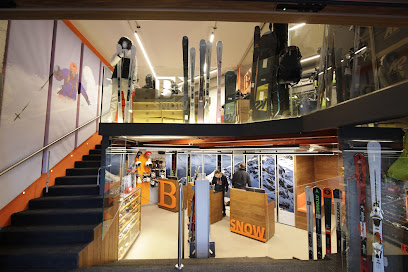
Spin Ski School Procenter
Discover the thrill of skiing and snowboarding at Spin Ski School Procenter, your ultimate winter sports destination in Sierra Nevada, Spain.
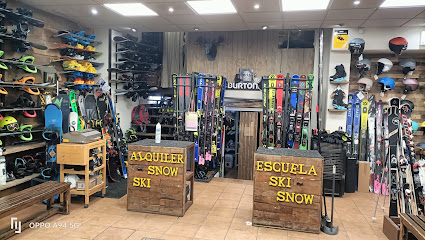
Alquiler de ski El Enebro, la tienda de Fran
Discover top-notch ski rentals at Alquiler de ski El Enebro in Sierra Nevada, where quality gear meets expert advice for every skiing adventure.
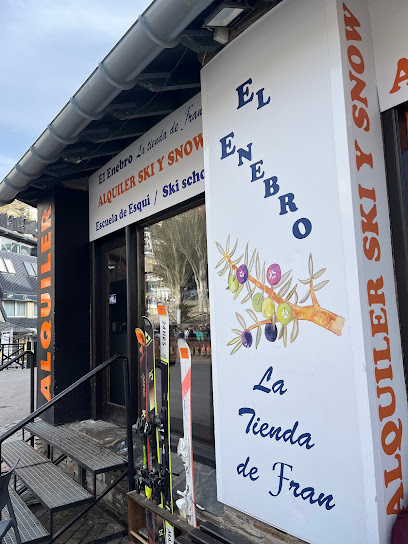
Chocolates Sierra Nevada
Experience the rich flavors of artisanal chocolates at Chocolates Sierra Nevada in scenic Pitres, Granada.
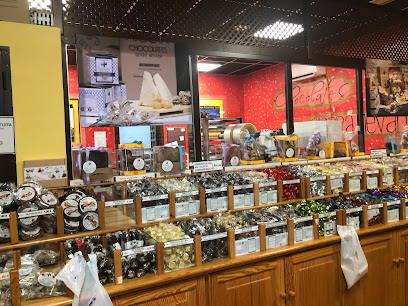
Tienda Maruja - Jamones de Trevélez y productos Alpujarreños
Explore the rich flavors of Trevélez at Tienda Maruja, your gateway to authentic Jamones de Trevélez and gourmet Alpujarreño products.
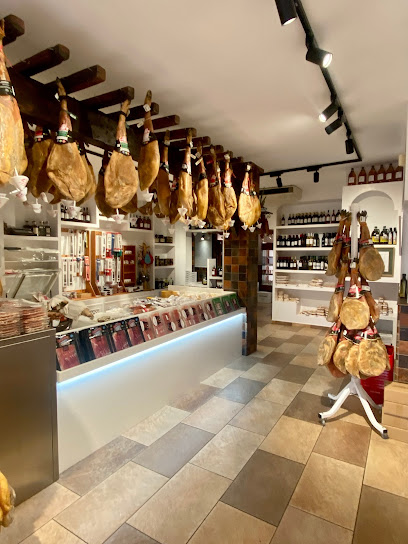
Skisol
Explore Skisol in Sierra Nevada for top-quality fitness equipment and expert advice, ensuring you stay active during your mountain retreat.
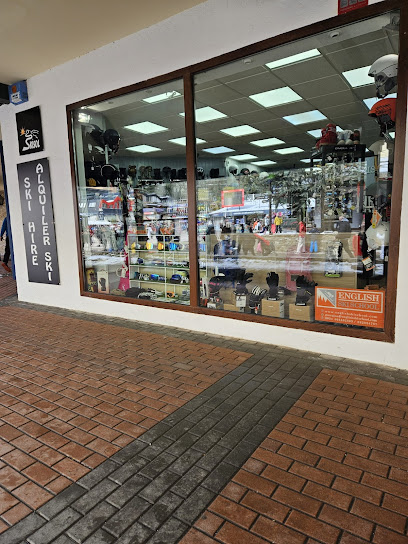
Essential bars & hidden hideouts
La Tabernilla del Darro
Discover the flavors of Granada at La Tabernilla del Darro, a charming grill and tapas bar by the picturesque Darro River.
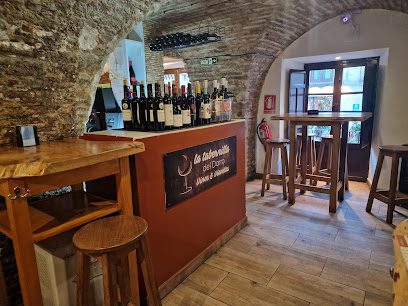
Hanalei Cocktail Bar
Discover the lively Hanalei Cocktail Bar in Granada, where innovative cocktails and a vibrant atmosphere await, perfect for nightlife enthusiasts.

Restaurante Little Morgan
Experience the essence of Mediterranean cuisine at Restaurante Little Morgan, a family-friendly gem in the stunning Sierra Nevada mountains.
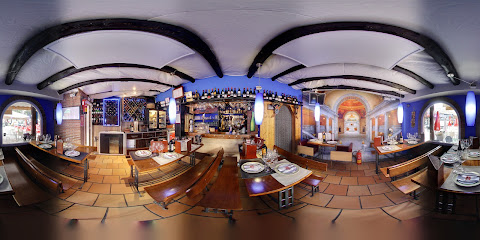
Kiosko Bar Hoya De La Mora
Discover Kiosko Bar Hoya De La Mora, a charming bar in Sierra Nevada offering stunning views and refreshing drinks in a serene mountain setting.
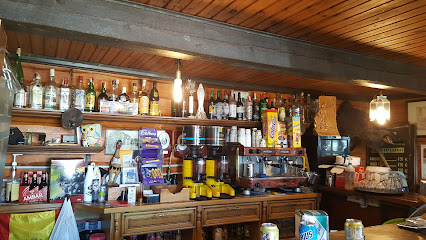
Bar Restaurante Las Gondolas
Discover the culinary delights of Bar Restaurante Las Gondolas, a grill paradise in the heart of Pradollano, Sierra Nevada, perfect for tourists and adventurers.
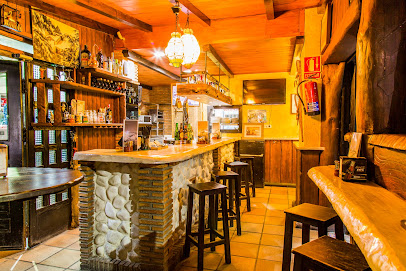
Bar Azahara
Experience the authentic flavors of Spain at Bar Azahara, a top-rated grill and tapas bar in the charming village of Válor.
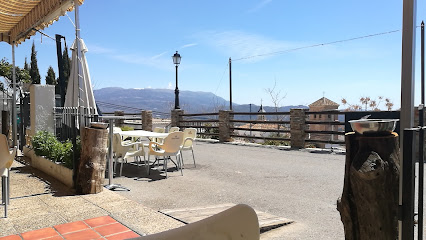
Bar Restaurante Como en casa
Experience authentic Spanish flavors in a cozy setting at Bar Restaurante Como en casa, a must-visit culinary haven in Sierra Nevada.
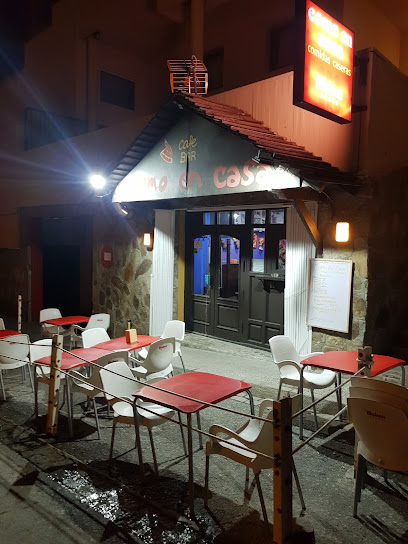
Taberna La Bodeguita
Discover the essence of Spanish tapas at Taberna La Bodeguita in Monachil, Granada, where authentic flavors and a vibrant atmosphere await.
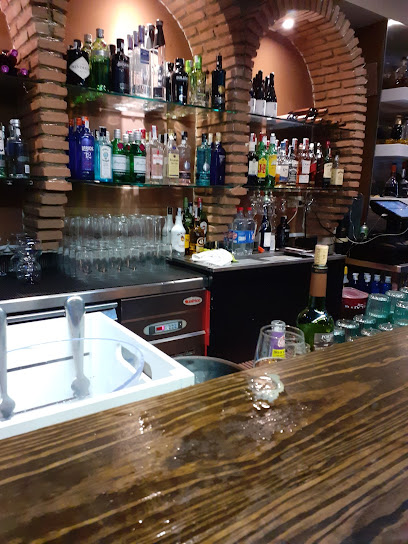
El Cartujano
Discover El Cartujano, a cozy bar in Monachil offering local drinks and a vibrant atmosphere for an authentic experience near Granada.
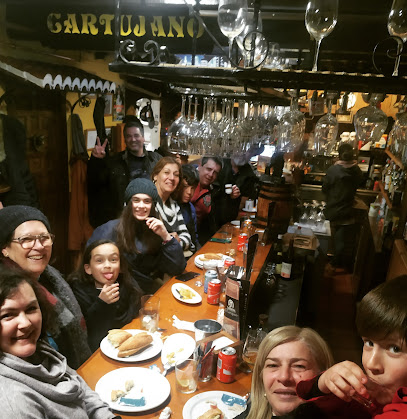
Jaleo Pub-Gintonería Sierra Nevada
Discover the vibrant nightlife of Pradollano at Jaleo Pub-Gintonería, where exceptional cocktails meet a lively atmosphere.

Bar Esqui
Experience the charm of Bar Esqui in Sierra Nevada, where warm hospitality meets local flavor in a cozy mountain retreat.
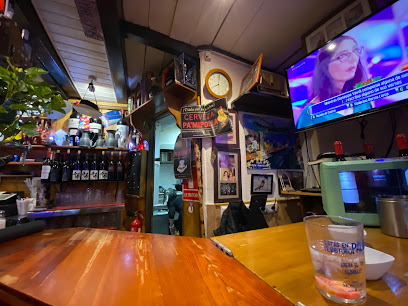
Edelweiss Après Ski
Experience the enchanting atmosphere of Edelweiss Après Ski, a premier piano bar in Pradollano, where music and mountain vibes come together.
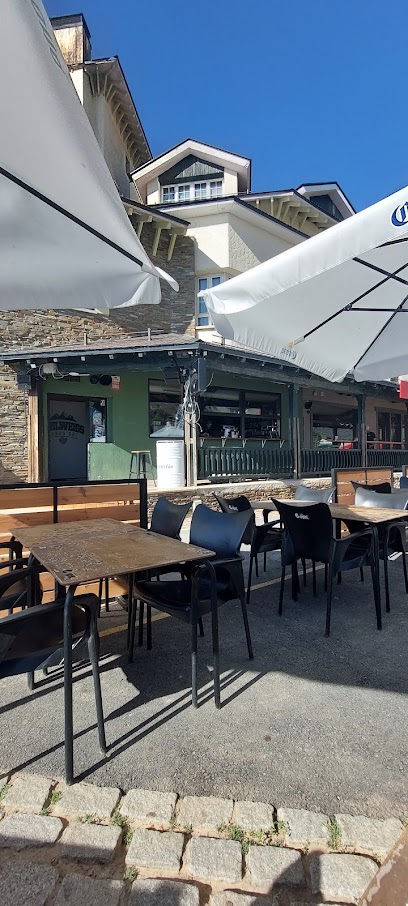
A2 GASTRO PUB
Experience the vibrant flavors of Spain at A2 Gastro Pub in Alquife, a must-visit culinary destination for tourists.
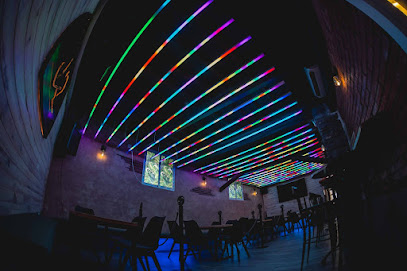
Bar virgen de las nieves
Discover the authentic tastes of Andalusia at Bar Virgen de las Nieves, a charming tapas bar in Trevélez offering a delightful culinary experience.
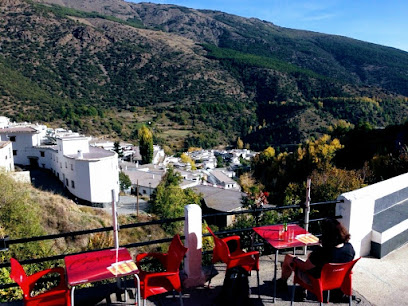
Bar El Rincón de los Charcones
Discover the essence of Andalusian culture at Bar El Rincón de los Charcones, where traditional tapas and a welcoming atmosphere await.

Local Phrases about Sierra Nevada
-
- HelloHola
[oh-la] - GoodbyeAdiós
[ah-dee-ohs] - YesSí
[see] - NoNo
[noh] - Please/You're welcomePor favor/De nada
[por fah-bor/de nah-dah] - Thank youGracias
[grah-thyas] - Excuse me/SorryPerdón/Lo siento
[pehr-dohn/loh syen-toh] - How are you?¿Cómo estás?
[koh-moh ehs-tahs] - Fine. And you?Bien. ¿Y tú?
[byen. ee too] - Do you speak English?¿Hablas inglés?
[ah-blahs een-glehs] - I don't understandNo entiendo
[noh ehn-tyen-doh]
- HelloHola
-
- I'd like to see the menu, pleaseMe gustaría ver la carta, por favor
[meh goo-stah-ree-ah behr lah kahr-tah, por fah-bor] - I don't eat meatNo como carne
[noh koh-moh kahr-neh] - Cheers!¡Salud!
[sah-lood] - I would like to pay, pleaseMe gustaría pagar, por favor
[meh goo-stah-ree-ah pah-gar, por fah-bor]
- I'd like to see the menu, pleaseMe gustaría ver la carta, por favor
-
- Help!¡Ayuda!
[ah-yoo-dah] - Go away!¡Vete!
[veh-teh] - Call the Police!¡Llama a la Policía!
[yah-mah ah lah poh-lee-see-ah] - Call a doctor!¡Llama a un médico!
[yah-mah ah oon meh-dee-koh] - I'm lostEstoy perdido
[ehs-toy pehr-dee-doh] - I'm illEstoy enfermo
[ehs-toy ehn-fehr-moh]
- Help!¡Ayuda!
-
- I'd like to buy...Me gustaría comprar...
[meh goo-stah-ree-ah kohm-prahr...] - I'm just lookingSolo estoy mirando
[soh-loh ehs-toy meer-ahn-doh] - How much is it?¿Cuánto cuesta?
[kwan-toh kwehs-tah] - That's too expensiveEs demasiado caro
[ehs deh-mah-see-ah-doh kahr-oh] - Can you lower the price?¿Puedes bajar el precio?
[pweh-dehs bah-har ehl pree-syoh]
- I'd like to buy...Me gustaría comprar...
-
- What time is it?¿Qué hora es?
[keh oh-rah ehs] - It's one o'clockEs la una
[ehs lah oo-nah] - Half past (10)Y media (10)
[ee meh-dee-ah (deez)] - MorningMañana
[mah-nyah-nah] - AfternoonTarde
[tahr-deh] - EveningNoche
[noh-cheh] - YesterdayAyer
[ah-yehr] - TodayHoy
[oy] - TomorrowMañana
[mah-nyah-nah] - 1Uno
[oo-noh] - 2Dos
[dohs] - 3Tres
[trehs] - 4Cuatro
[kwah-troh] - 5Cinco
[seen-koh] - 6Seis
[says] - 7Siete
[syet-eh] - 8Ocho
[oh-choh] - 9Nueve
[nweh-veh] - 10Diez
[dyeth]
- What time is it?¿Qué hora es?
-
- Where's a/the...?¿Dónde está...?
[dohn-deh ehs-tah] - What's the address?¿Cuál es la dirección?
[kwal ehs lah dee-rehk-syon] - Can you show me (on the map)?¿Puedes enseñarme (en el mapa)?
[pweh-dehs ehn-sehn-yar-meh (ehn ehl mah-pah)] - When's the next (bus)?¿Cuándo es el próximo (autobús)?
[kwan-doh ehs ehl proh-ksee-moh (ow-toh-boos)] - A ticket (to ....)Un billete (a ...)
[oon bee-yeh-teh (ah ...)]
- Where's a/the...?¿Dónde está...?
History of Sierra Nevada
-
The Nasrid Dynasty, the last Muslim dynasty in the Iberian Peninsula, left an indelible mark on the Sierra Nevada region. The Alhambra, an exquisite palace and fortress complex built in the 13th century, stands as a testament to Islamic art and architecture. The Alhambra's intricate stucco work, serene courtyards, and stunning views of the Sierra Nevada make it one of Spain's most iconic landmarks.
-
The fall of Granada in 1492 marked the end of Muslim rule in Spain. The Catholic Monarchs, Ferdinand and Isabella, successfully reconquered the region, culminating in the surrender of the Nasrid ruler, Boabdil. This historical event is a cornerstone in Spanish history and significantly influenced the cultural landscape of the Sierra Nevada.
-
Following the Reconquista, the Moriscos—Muslims who had converted to Christianity—faced severe persecution. The La Alpujarra Rebellion (1568-1571) was a significant uprising by the Moriscos against the Spanish Crown. The rugged terrain of the Sierra Nevada provided a strategic advantage to the rebels, although the rebellion was eventually suppressed.
-
Established in 1981, the Sierra Nevada Observatory is one of the highest observatories in Europe. It is located at an altitude of 2,850 meters and plays a crucial role in astronomical research. The clear skies and minimal light pollution make it an ideal location for studying celestial phenomena.
-
Designated as a national park in 1999, the Sierra Nevada National Park is a biodiversity hotspot. It encompasses a vast array of flora and fauna, some of which are endemic to the region. The park also preserves traditional agricultural practices and ancient footpaths, offering a glimpse into the historical way of life in the Sierra Nevada.
Sierra Nevada Essentials
-
Sierra Nevada is located in the Andalusian region of Spain. The nearest major city is Granada, which has an international airport (Federico García Lorca Granada-Jaén Airport). From Granada, you can reach Sierra Nevada by car in about 45 minutes. Alternatively, you can fly into Malaga Airport, which is about a two-hour drive away. Buses are available from Granada to Sierra Nevada, especially during the ski season.
-
Once in Sierra Nevada, transportation options include local buses, taxis, and rental cars. The ski resort area has shuttle buses that run frequently between popular spots. If you prefer driving, rental cars are available in Granada and at the airports. For those looking to explore the mountainous terrain, guided tours and bike rentals are popular options.
-
The official currency in Spain is the Euro (EUR). Credit and debit cards are widely accepted in most hotels, restaurants, and shops in Sierra Nevada. However, it’s advisable to carry some cash for small purchases, especially in remote areas. ATMs are available in the resort area and in nearby towns. Make sure to inform your bank of your travel plans to avoid any issues with card transactions.
-
Sierra Nevada is generally a safe destination for tourists. Nevertheless, standard precautions should be taken. Avoid leaving valuables in plain sight in your car, and be cautious in crowded areas where pickpocketing can occur. The main resort area is well-patrolled, but it is wise to stay aware of your surroundings. There are no specific high-crime areas targeting tourists in Sierra Nevada.
-
In case of emergency, dial 112 for immediate assistance, which connects you to police, medical, and fire services. There are medical facilities available in the resort area and in nearby towns. It’s recommended to have travel insurance that covers medical emergencies. For minor health issues, there are pharmacies in the resort area where you can purchase over-the-counter medications.
-
Fashion: Do dress in layers and wear appropriate clothing for the weather, especially if you plan to hike or ski. Avoid overly revealing clothing. Religion: Do respect local customs and traditions. When visiting religious sites, dress modestly. Public Transport: Do be respectful and give up your seat to elderly passengers. Eating & Drinking: Do try local dishes and wines. Don’t rush through meals; savor the experience as dining is an important part of Spanish culture. Greetings: Do greet people with a friendly 'Hola' or 'Buenos días'. A handshake is a common form of greeting.
-
To experience Sierra Nevada like a local, consider visiting during the off-season for a quieter experience. Explore the local markets in nearby towns like Monachil for fresh produce and artisanal goods. Engage with locals, especially in family-run restaurants, to hear stories and get recommendations. Don’t miss the Alpujarras villages on the southern slopes of the Sierra Nevada, which offer a glimpse into traditional Andalusian life. For a unique experience, hike the Sulayr Trail, which offers panoramic views and connects several picturesque villages.
Nearby Cities to Sierra Nevada
-
Things To Do in Málaga
-
Things To Do in Ronda
-
Things To Do in Murcia
-
Things To Do in Catalan Bay
-
Things To Do in Moorish Castle
-
Things To Do in Casemates Square
-
Things To Do in Gibraltar
-
Things To Do in Main Street
-
Things To Do in St. Michael's Cave
-
Things To Do in Alameda Botanic Gardens
-
Things To Do in Queensway Quay Marina
-
Things To Do in Gorham's Cave Complex
-
Things To Do in Europa Point
-
Things To Do in Seville
-
Things To Do in Tetouan


